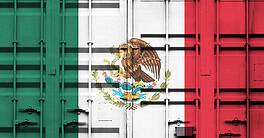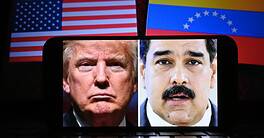Emerging and developing economies will likely be hardest hit by Covid-19. Rebuilding will require addressing preexisting conditions as well as the new ones.

Covid-19 is cutting a devastating swath through most parts of the global economy, exacerbating protectionism, worsening trade disputes, contributing to the fall in foreign direct investment and devastating the health and livelihoods of millions. In the June update of its World Economic Outlook, the International Monetary Fund (IMF) projected a contraction in the world economy in 2020 of 4.9%, 1.9% more than it had forecast in April, with advanced economies suffering an average 8% loss in output and Europe generally affected even more. The cost of the crisis will exceed $12 trillion over 2020-2021, Gita Gopinath, director of the IMF research department, predicted in June.
But the hardest hit will be emerging and developing markets where savings are low, government resources are few and practical measures to mitigate the virus—such as social distancing—are difficult. Because of the additional healthcare and social spending outlays needed, developing countries are looking at significant fiscal gaps for 2020.
“The short-term growth outlook for 2020 is in tatters everywhere—even in countries where the Covid-19 response was superb, like South Korea and Taiwan, where there were no lockdowns and which have had a very strong test-trace-isolate response,” says Rob Carnell, Asia-Pacific chief economist at ING Bank.
Carnell adds that it is hard to predict which countries will turn out to have had “the best pandemic” experience because there are still too many uncertainties, but it is clear that many central banks are maxing out on mitigation efforts.
“This is especially true where the constraints on fiscal policy are more severe–poorer countries, especially–where monetary policy is having to make up for the shortcomings of fiscal policy,” he says.
Covid-19 spending coupled with maturing debt obligations have left countries as far distant as Egypt, South Africa and Brazil with massive budget caps, according to Oxford Economics. Tourism, a critical income generator for many emerging markets, has collapsed. Economies dependent on energy, natural resource export and remittances are also struggling, the last severely impacted by border closures and service job losses.
As of late August, IMF projections are for a contraction of 3% in 2020 for emerging markets/developing economies’ GDP, or minus 5% excluding China, the only major economy expecting any growth this year. Recovery in 2021 again depends on China; expected growth of 5.9% for emerging/developing economies would be much lower without a boost from China. Uncertainties include foreign investor appetite, the extent to which trade recovers and the state supply chains next year.
The greatest economic uncertainty remains the pandemic factor; any significant uptick in Covid cases later in 2020 or early 2021 will render all of these already highly conditional forecasts obsolete. All emerging markets have come under significant stress, says Ed Parker, head of Europe, Middle East and Africa sovereigns at Fitch Ratings. His group has downgraded a record 20 sovereigns so far this year.
Indeed, no numbers fully capture the crisis facing emerging markets. As of midyear, the IMF had received 102 separate requests for emergency funding and approved 75, with most funds designated for Sub-Saharan Africa and South America. The eventual cost of these and additional flexible credit lines is estimated at $250 billion. Even middle-income developing economies are at a tipping point, says Richard Kozul-Wright, director of globalization and development strategies at the UN Conference on Trade and Development, suggesting that governments need more policy space and a more coordinated international response to get through the Covid-19 crisis.
Thirty-seven countries could face major unrest as populations turn on governments they perceive as incompetent, corrupt or both, Verisk Maplecroft, a global risk analysis firm, cautions in a July report. “Economies facing a ‘perfect storm’ of risks are mostly concentrated in Africa and Latin America, including Nigeria, [the Democratic Republic of] Congo, Ethiopia, Venezuela and Peru,” the firm says. “But investors, companies and insurers in key emerging markets such as Bangladesh, Turkey and Egypt will also need to brace for an explosive end to the year,” it warns, suggesting that the biggest risks lie where “the pandemic’s economic fallout inflame[s] unrest over preexisting grievances.”
Widening inequality—of income, opportunity and gender—represents a time bomb, aggravated by the Covid crisis, says Ian Bremmer, president and founder of political risk research and consulting firm Eurasia Group. “We urgently need to invest in people,” he said in a recent webcast, “or face levels of social disruption that will be unlike anything we’ve seen in our lifetime.”
The Hardest Hit
Sub-Saharan Africa is widely expected to be the hardest hit region, followed by India, the Middle East and Latin America, but China and the other BRICs (Brazil, Russia, India and China) continue to command the greatest concern.
“China looks set to return to its pre-virus growth path by year end, whilst other parts of Asia and emerging Europe will experience solid rebounds too,” says Edward Glossop, emerging markets economist at Capital Economics. “Recoveries elsewhere will be disappointingly weak, with output well below its pre-virus path by the end of 2022.”
Bremmer is less sanguine about rebound prospects. China will emerge in bad shape, he argues, because it extended billions in credit to countries least able to repay it and because growing geopolitical tensions will lead it to be excluded from the area of its greatest comparative advantage, IT and data industries. “An insecure China is a problem for us all globally,” says Bremmer.
For some, like Nigeria and the Gulf countries, the crisis has been mitigated by a slight recovery in energy prices and access to international markets, enabling currencies to recover somewhat against the US dollar. But for those “with weaker balance sheets, lots of dollar debt and poor access to markets, there is no magic bullet,” Parker warns.
With the virus still spreading, most emerging economies have seen a falloff in exports and a rise in government debt, with the Middle East and North Africa (MENA), Sub-Saharan Africa and Latin American regions most affected. Fitch has put 11 Latin American countries on negative outlook, and of the four emerging countries that have defaulted so far in 2020—Lebanon, Suriname, Ecuador and Argentina—three are in that region.
“Many had fewer buffers and were fundamentally weak, with problems that predate the virus shock,” Parker says, adding that Brazil and Mexico were also impacted by weak growth and poor governance, while Peru and Chile are buffeted by the drop in commodity prices.
Turkey has generally performed well through the pandemic. A swift lockdown followed by effective track and trace measures allowed its key tourist industry to at least partially reopen. However, the country’s precarious dependence on international capital flows coupled with rising inflation (both a consequence of the recent collapse in the lira) have raised concerns. So have President Recep Tayyip Erdoan’s increasingly assertive foreign policy and growing illiberalism, which have antagonized traditional allies like the US, Britain and France, and could impact FDI.
For most analysts, however, MENA and Sub-Saharan Africa are the regions to watch most closely. The jury is still out on how hard Iran has been impacted; but Lebanon this year is expected to see an unprecedented contraction of 11% to as much as 24%, reflecting its dire situation made much worse by the explosion of 2750 tonnes of ammonium nitrate in Beirut’s dock area on August 4.
The Lebanese pound, for many years stable at the officially pegged rate of around 1,500 to the US dollar, fell to around 8,000 after the central bank lost its ability to prop up the currency. The devaluation, coupled with the financial implications of the August 4 blast, has hit households, businesses and the banks. A restructuring of the banking sector is likely, given that the Bank of Lebanon is currently unable to repay the loans it took from it. But first, Lebanon would need to put an economic restructuring plan in place, which will not be possible without a fully functioning government.
In Sub-Saharan Africa, the larger economies of South Africa and Nigeria face unprecedented hits to GDP despite the fact they have locked down against the virus only partially. In March and April, Fitch and S&P variously issued downgrades for Nigeria, Angola, Gabon and Cameroon, with other countries put on negative watch—in some cases despite receiving IMF emergency funding to aid debt servicing and other key outgoings.
Many Sub-Saharan countries “were already operating in a difficult environment, with high levels of sovereign debt, prior to Covid-19,” says Jan Friederich, head of Middle East and Africa sovereign ratings at Fitch. “The question is how they can get debt back to a sustainable trajectory.”
India’s mishandling of Covid-19—a draconian shutdown that left millions stranded miles from home and cutting remittance payments overnight—followed by a too-rapid reopening, has produced spiraling infection rates that the underresourced health system cannot cope with. With infections now topping three million, lack of support for households and businesses has compounded the distress.
“Relative to potential, the recovery will be the weakest amongst major economies,” says Glossop. “Real GDP will contract by over 5% this year, the worst performance since records began.” Already-high levels of nonperforming loans could also lead to a banking crisis, he warns.
Ripping Up the Fiscal Rule Book
By contrast, the outlook for Central Europe and the rest of Asia looks comparatively positive. The former is expected to bounce back in 2021, aided by pragmatic handling of Covid-19, including giving fiscal support to businesses, and close integration with the EU supply chain. Asia will be helped—it is hoped—by China’s recovery and relatively high confidence in the Covid response by other governments including South Korea, Taiwan, Thailand, Vietnam, Malaysia and Singapore, which is expected to feed into a stronger and more sustainable economic recovery for these countries going forward. Both regions will benefit from the fact that—China aside—debt levels were comparatively low going into the pandemic, which means they had more fiscal space.
“The outlook for 2021 depends considerably on the extent and nature of money spent now,” says ING’s Carnell. “The richer countries which have spent most to protect their economies will pull away fastest, opening up a gap with the poorer countries.” The pandemic will create a permanent loss of output for most if not all economies in the region, he argues. “The question is, has it also weighed on the potential for future growth?”
All emerging markets would have benefited from a moratorium on ratings-agency downgrades, Carnell says, which would have freed sovereigns to spend without fear of being penalized or put on negative watch. “The right policy response was to spend as hard as you could to protect your economy’s productive capacity, and that has meant ripping up the fiscal rule books,” he says. “No point in remaining ‘prudent’ if you end up with no economy at all.”
Conventional spending policy will lead to a weaker post-crisis growth trajectory and fiscal position, Carnell argues. The best outcomes will accrue to countries that spend liberally and wisely to protect jobs, businesses and long-term economic potential.
An unprecedented crisis requires a similarly extraordinary response from emerging market authorities, with the most agile and imaginative being rewarded, Beata Javorcik, chief economist at the European Bank for Reconstruction and Development (EBRD), argues. “Every crisis creates opportunities, and this is true here,” she says. “It is up to enlightened governments to seize them and make the best of the situation.”
Good government matters now more than ever, Javorcik adds. Besides using the opportunity posed by the pandemic to encourage companies to act more responsibly and transparently, she says, governments should also look to fill gaps left in the global value chain by China, which could become more numerous if tensions with the West continue to rise.
“Many countries can produce as well and as cheaply; and if they signal they are open for business, they stand to benefit,” says Javorcik, adding that the same principle applies to remote working. If more people are working from home, companies can extend the practice across borders to benefit from lower wages prevailing in other countries.
Looking Ahead
In the longer term, Javorcik anticipates a shift to green, with climate change mitigation becoming a priority where it was previously seen as unimportant or just costly. Many close observers argue that the pandemic was caused, at least in part, by human encroachment on the animal world, highlighting the importance of caution in the expansion of human economic activity.
Other important but subtle changes in attitudes, with far-reaching consequences, may be in the works. The pandemic may engender greater respect for state-owned enterprises, which have been more-reliable employers during the crisis. Despite debt levels likely to be much higher going forward, political winds may shift to a more favorable view of state spending to mitigate the crisis. Likewise, the chaos wrought by the Covid upheaval may spark stronger support for more-flexible labor markets. Public sentiment may encourage governments to take decisive action to close international tax loopholes that have allowed large companies to exploit opportunities in emerging markets without adequately supporting the host nation.
IMF managing director Kristalina Georgieva explained in a July 30 webcast that the global recovery is likely to be partial and uneven, happening in “different countries; different sectors, at different times.” That uncertainty will be most pronounced among emerging and developing markets. While Asia and emerging Europe look set to come through in better shape than other developing regions, that could change.
History shows that pandemics, like wars, accelerate many trends already underway as well as helping to initiate new ones. The post-Covid world will look different in ways we can’t predict. For emerging and developing economies, it will require navigational skill to avoid the deepest potholes, coupled with imagination and agility to make the most of any opportunities it may present.



